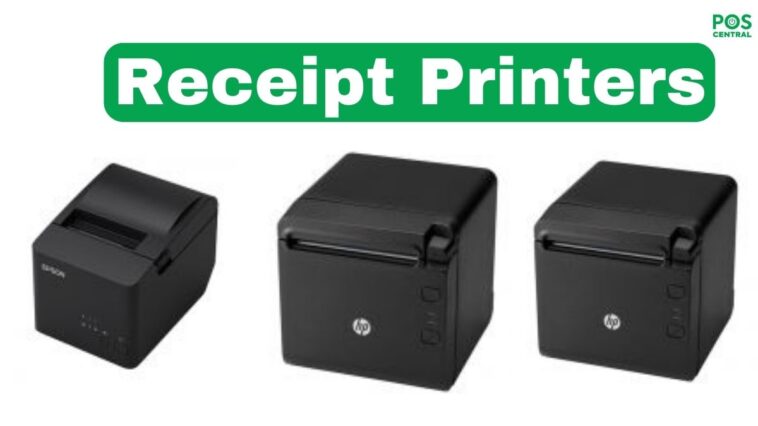When you’re running a business, especially in retail or hospitality, having the right equipment can make all the difference. A reliable receipt printer is one of those essential tools that often goes unnoticed until it’s not working the way you need it to. With many options available today, finding the perfect fit for your business requires a bit of thought. So, what exactly should you look for in a receipt printer? Let’s dive into the essential features and factors that can help you make an informed decision.
1. Understanding Your Business Needs
The first step in choosing a receipt printer is understanding your specific needs. Are you in a fast-paced environment, such as a restaurant or retail store, where quick printing is essential? Or do you need a quieter option for a small office or boutique? Each type of business has unique demands, so selecting a printer that aligns with these can help streamline operations and enhance customer satisfaction.
Think about your daily volume of transactions and the type of receipts you’ll be printing. If your store often prints detailed receipts with logos or graphics, choosing a high-quality thermal or ink-based printer will help ensure clear and professional-looking receipts every time.
2. Thermal vs. Impact Printers
There are two primary types of receipt printers: thermal and impact.
-
Thermal printers are popular for their speed and silent operation. They use heat to print on special paper, which is perfect for fast-paced environments. Thermal printers are ideal for businesses with high traffic, as they require minimal maintenance and no ink cartridges.
-
Impact printers, on the other hand, work like a typewriter, pressing ink onto the paper. These printers are suitable for environments where receipts may be exposed to heat (like kitchens) since the thermal paper used in other models can turn black when exposed to high temperatures. Impact printers can also handle carbon copies if you need duplicate receipts.
Knowing the difference can help you choose the right fit based on the specifics of your business environment.
3. Printing Speed and Efficiency
For businesses handling high volumes, speed is crucial. Slow printers can create a bottleneck at the checkout, which can frustrate customers and potentially result in lost sales. Most modern thermal receipt printers offer impressive speed, with some models printing up to 20 receipts per minute. Consider the average number of transactions in your business to determine the speed that will keep things flowing smoothly.
Keep in mind, however, that faster printers tend to be a bit more expensive. If speed isn’t a critical factor for your business, you might be able to save some costs by opting for a slightly slower model.
4. Connectivity Options
Receipt printers come with various connectivity options, and selecting the right one depends on how you plan to use it. Common connectivity options include:
- USB: Simple to use and common in most printers, USB connections are great for a direct, wired setup.
- Ethernet: This is ideal for larger setups where multiple terminals need to access the same printer. Ethernet-connected printers are a smart choice for large retail stores or restaurants.
- Bluetooth/Wi-Fi: If flexibility and mobility are a priority, wireless options allow you to place the printer anywhere within your business premises, offering a seamless, clutter-free setup. This option is popular in cafes or food trucks, where space is limited.
Evaluate your setup to determine the connectivity option that aligns best with your existing equipment and future plans.
5. Paper Width and Print Quality
The width of the paper roll can impact both the readability of your receipts and the variety of information you can include. Most receipt printers use standard 80mm-wide paper, which is commonly found in retail and dining settings. Some models, however, offer smaller widths for more compact receipts.
Print quality is another aspect to consider. If you want to print logos or images on your receipts, ensure that the printer you choose has high enough resolution for clear and professional-looking receipts. Many thermal printers provide excellent quality, making them ideal for businesses that prioritize branding and presentation.
6. Durability and Maintenance
Investing in a durable printer pays off in the long run. Reliable printers are generally designed to handle high-volume usage without breaking down. Look for features like spill resistance or dust-proofing if your business environment demands it.
Maintenance is another crucial aspect. Thermal printers, for example, require very little maintenance since they don’t use ink, which saves time and effort. Impact printers may need ink refills or cartridge replacements periodically, so keep this in mind if you choose an impact model.
7. Ease of Use and Installation
Installing and using a receipt printer should be simple. Models with plug-and-play functionality can be set up quickly, allowing your employees to start using them with minimal training. A user-friendly interface and clear instructions are essential for a smooth setup experience.
Consider printers that support auto-cutting features to make tearing receipts easy and convenient. These features save time and reduce the chances of paper jams, which can otherwise slow down operations.
8. Cost of Ownership
The initial cost of a receipt printer is important, but it’s also essential to think about the long-term cost of ownership. Thermal printers might be slightly more expensive upfront but can save money in the long run due to the absence of ink and toner expenses. Impact printers, though often cheaper at the outset, require ongoing ink or ribbon replacements.
Additionally, check if the printer model you’re considering is compatible with your point-of-sale (POS) system. This can prevent the need for adapters or additional software, reducing the overall cost of ownership.
9. Warranty and Support
Lastly, always look at the warranty and support options. A good warranty can provide peace of mind and help protect your investment. Some companies offer extensive support services that can assist with troubleshooting or replacement in case of issues. Before making a final decision, read through the warranty details to understand what’s covered and for how long.
Making the Final Choice
Choosing a receipt printer may seem like a small decision, but it can greatly impact the efficiency of your business operations. By considering factors like printing speed, connectivity, durability, and cost, you can find a printer that meets your unique needs and enhances your business’s workflow.
Remember, a receipt printer is more than just a device for printing transaction details—it’s an essential part of your customer service. With a reliable printer, you can provide customers with clear, professional receipts that reflect the quality of your business.
Also Read: Why Should You Choose a BIXOLON Label Printer for Your Business?
This post was created with our nice and easy submission form. Create your post!





